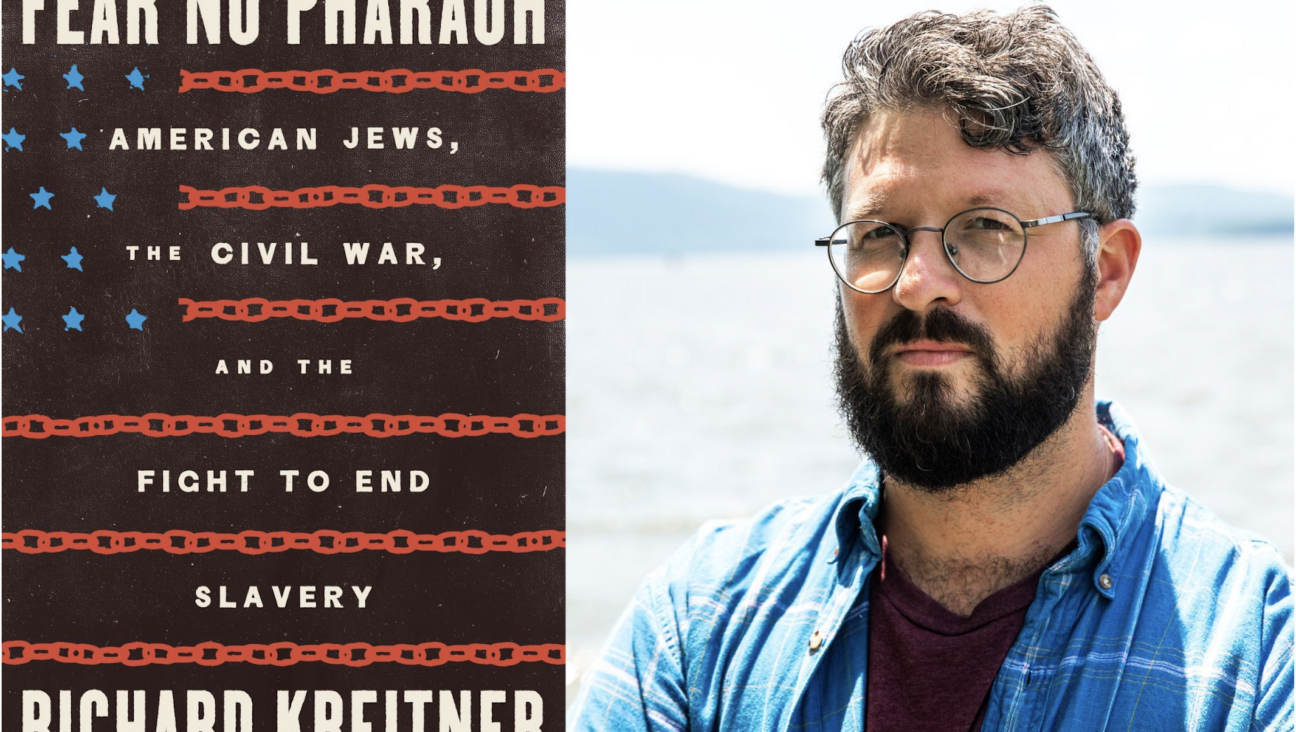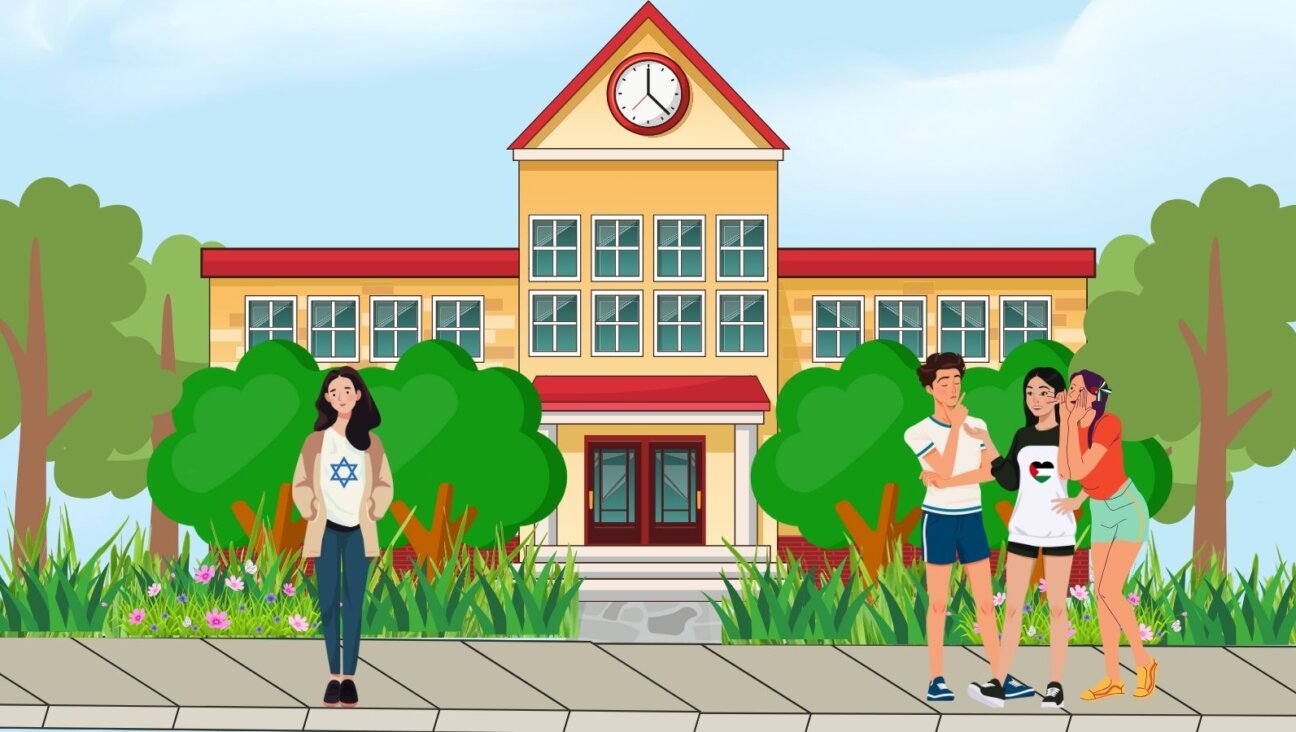This Amsterdam neighborhood was once inhabited by Jews. None are left to celebrate its centennial

Graphic by Angelie Zaslavsky
Outside 58 Weidestraat in Amsterdam’s Betondorp district, two brass stones lie set into the sidewalk. Known by the Dutch as stolpersteine, or “stumbling stones,” the square plaques are engraved with the names of Jews who moved to this neighborhood upon its creation after the First World War and were deported during the Second. Herman Richard Bonn and Anna Bonn-Cauveren, 33 and 32 respectively, died at Buchenwald and Auschwitz — Herman just three months shy of Amsterdam’s liberation.
Only a few other stolpersteine exist in this development of 1,900 homes. Many more are laid in the historically Jewish neighborhoods further north, and some 70,000 exist across Amsterdam. But the coming years could see as many as 230 arrive in Betondorp. With the enclave approaching its centennial, local organizers have begun to collect stories, educate their neighbors and appreciate their community’s role in the city’s Jewish history.
What took them so long? For one thing, Amsterdam has been shamefully slow to acknowledge its participation in the Holocaust. The city unveiled its first significant memorial — the Daniel Libeskind-designed National Holocaust Names Monument — only in 2021, outside the old Jewish Quarter.

Names Memoria;: The name of German-Dutch diarist Annelies Frank appears on a stone among other victims at the Holocaust Memorial of Names in Amsterdam. By Getty Images
What’s more, Betondorp is a small, remote district. Originally, that was a unique selling point. Amsterdam’s rapid expansion between the world wars lured many people from the congested core to the newly annexed outskirts — specifically this “concrete village” (the literal translation from Dutch) built by modernist visionaries. At one point, Betondorp had the sixth largest Jewish community in Amsterdam. But in the latter half of the 20th century, as the zeal for socialist housing waned, the development lost much of its visibility and influence.
The 100-year milestone is giving Betondorp a moment in the spotlight. This April, the magazine Ons Amsterdam will publish a special issue delving into the neighborhood’s social and political history. In the summer, local artist and architectural guide Maartje van Dijk will stage a community arts festival with a documentary-screening and readings by Jewish historian Aart Janszen. The engine behind the celebrations is Betondorp 100, a community organization that has compiled hundreds of stories and snapshots for the archives. Together, they’ve painted a picture of a unique interwar relic whose development is a metaphor for that of Amsterdam itself.

An aerial view of Betondorp and the surrounding neighborhoods. Image by Amsterdam City Archives
In the early 1920s, the city was crowded, land was scarce, working-class “basement houses” were crumbling and bricks were unaffordable. Feeling threatened by an influx of Russian émigrés and the Communist principles they brought with them, the ruling social democrats decided to get creative. On the last day of 1921, the city annexed acres of fallow grazing land beyond the city limits. Their goal: revolutionizing housing for all. No one, as Dutch politicians of the time were fond of saying, is born to be poor.
The mayor pulled together a crack team to execute his vision for a workers’ utopia. Housing director Arie Keppler had studied the “garden city” movement emerging in England. Jewish diamond worker and union director Salomon Rodrigues De Miranda became an alderman, and in this role convinced thousands of Amsterdammers living in condemned properties to move to Betondorp. The socialist architect Dick Greiner devised a master plan of row-houses, shops, schools and restaurants radiating from a central square. Each home would have its own front door and garden; and instead of bricks, each would be constructed with innovative prefab concrete blocks.
While more renowned architects like Le Corbusier were still drafting their first concrete constructions, Greiner and his colleagues created an entire city-within-the-city influenced by new styles like Art Deco, Cubism and De Stijl, the Dutch modernist movement popularized by Piet Mondrian. The city hired nine architects to design nine subtly different zones, all with poured-concrete bricks.
“They used 10 construction companies in order to have a diverse pool to test from and lower the risk of the experiment going wrong,” van Dijk said on a recent tour of the neighborhood, pointing out the different adornments that distinguish each zone. “There’s a lot going on, but it’s all united by the color palette.” The bold primary colors reminiscent of Mondrian leap out from the grey facades on glossy painted doors.
De Miranda shared Keppler’s vision for social housing — particularly for Jews from the crumbling inner city. In the 1920s, he recruited 100 Jewish families to the neighborhood, including that of Samuel Verdoner, a religious teacher. Even with that number, there were barely enough men for a minyan; the atmosphere in Betondorp was strictly socialist, and few residents practiced religion. The complex had a clocktower but no church. But Verdoner, determined to pray, eventually found a permanent hazan, or cantor, and moved the congregation to a prominent building overlooking the central square.
Over two decades, hundreds of Dutch Jews kept Betondorp life ticking. They ran the grocery store, the drug store and the bakery, now private homes with broad windows. They cleaned houses, taught music, tailored clothing and sold ice-cream in summertime, prospering alongside fellow Betendorpers. Renée Karsten, an editor at Ons Amsterdam, noted that the middle class emerging from Betondorp at that time infuriated the local Communists, who called them “bourgeois proletariat,” the champagne socialists of their time.
“One day the Communists covered the street signs with stickers saying Marxstraat, Leninstraat,” Karsten said. “Of course, the Socialists quickly took them down.”
Today, Betondorpers still gather in The Brink, a central garden festooned with flowers and modern sculpture. There’s a record shop at one end selling vintage vinyl, and a library with original stained-glass windows reading hominem unius libri timeo: “I fear the man of a single book.” When I met amateur historian Rogier Schravendeel there, residents pulled over in their cars to say hello, or wander up to shake his hand. Schravendeel doesn’t live in Betondorp. Yet he’s considered something of a local hero for his campaign to compile details about every known Jewish resident, house by house. For him, the motivational “trigger” came when he discovered the existence of a synagogue in his former neighborhood Indische Buurt, named for the East and West Indian immigrants who settled there after the war.
“People denied there were even Jews there before,” Schravendeel told me as we walked to the one-time synagogue, now a busy Hindu temple with its original ziggurat decoration in black and white tile.
“I learned nearly 600 Jews were killed there,” he said of Indische Buurt. “The machine in Amsterdam was highly organized, and people were so civilized, they didn’t run. Amsterdam had the highest percentage of Jews in Europe and it had the highest murder rate.”
It’s true — more than 75 percent of Dutch Jews perished during World War II, compared with 40 percent in Belgium and 25 percent in France. “I wanted to bring that back into collective memory,” Schravendeel said.
Schravendeel began campaigning for stolpersteine in Indische Buurt, where he’s managed to lay 20 so far. In Betondorp he’ll do the same, though currently he’s busy uploading his research to the “Betondorp 100” website and planning a bound volume of anecdotes. “I want to create a monument for East Amsterdam that focuses on Jewish life, not Jewish death,” he told me.
This is easier said than done. The reason I haven’t tracked down a single Jewish authority on Betondorp – neither Schravendeel nor van Dijk nor Karsten are Jewish – is fairly clear. Starting in 1940, the men began to lose their jobs. In 1941, the children were barred from school. The collaborators arrived, and the deportations began. The story is well known.
Miranda disappeared to Amersfoort concentration camp in 1942. The local rabbi was killed at Sobibor. The Verdoner family hung on until 1943, but Samuel died in Auschwitz in 1944. By that time, Schravendeel tells me, the Jews had vanished from Betondorp. Their homes were looted, their trees cut down and burned as fuel. Van Dijk knows one elderly resident, non-Jewish, who can remember Canadian soldiers marching through during the liberation. After the war, the empty houses were assigned to new families. Life rebooted. Yet the idea of Betondorp as some sort of modern idyll went by the wayside.
Generations later, though, people seem to love it here – not despite the history but rather because of it. Residents gleefully point out stained glass panels and striking vertical windows when I pass their front gardens. Many are taking up van Dijk’s architecture and history tours. Recently, a couple in their 70s said they were absolutely amazed by how much they learned on a two-hour walk, after living in Betondorp for so many years.
Van Dijk asked exactly how long they’d lived in the neighborhood. Their reply – “Since the 1940s” – stopped her cold. She couldn’t bear to ask more.






















